Following the closure of the Euros group stage, we have had a few days to reflect on the competition and some standout moments. Many teams have failed to show set-piece ingenuity, but for some teams, it has proven to be a total game-changer. From corner kicks to throw-ins, every dead-ball situation is vital to the team’s success, and this article will discuss the most interesting routines used within each group, with the exception of Group F, where most teams struggled, with the exception of the Czech Republic but their lack of opportunities limited their potential for creativity.
In this tactical analysis, we will look into the tactics behind the EURO 2024’s most interesting set pieces, with an in-depth analysis of why each routine is used. This set-piece analysis will examine why each routine has been innovative, providing insights into their effectiveness based on execution, timings, and strategic variations.
Group A
To begin with, hosts Germany have used a number of fascinating routines, from attacking corner kicks. While their defensive set-piece issues were highlighted last week, Germany can also use set plays to their advantage to gain that vital edge. Just like in the Champions League Final earlier in the month, Toni Kroos is able to use his excellent and consistent technique to drop the ball in the exact part of the penalty area he wants. Because of the precision that Nagelsmann can trust, Germany are able to prepare their routines efficiently. For example, in the image below, Kroos is expected to make the ball arrive at the six-yard line, in line with the front post, in the area highlighted. With the ball expected to drop in the target area, Kimmich moves to set a screen on the zonal defender in that area, which allows Havertz to arrive at the ball without opposition pressure.
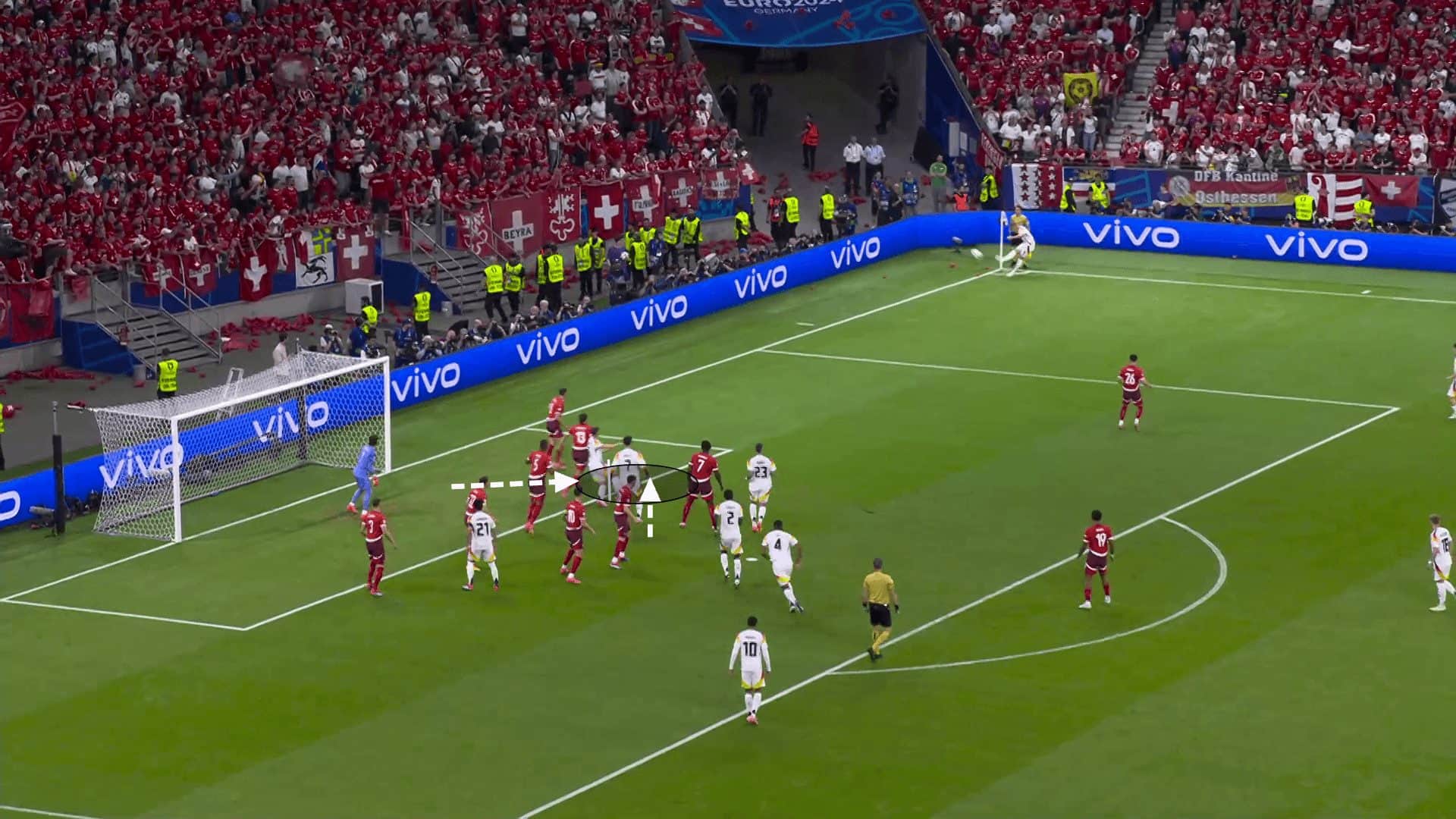
Another routine that Germany have attempted in the opening three games has been through moving the opposition setup to the near post area, before a late movement to attack the back post. With the cluster at the near post, there is traffic in that area, allowing Rudiger to make a sharp movement to the back post without an opponent tracking the run.
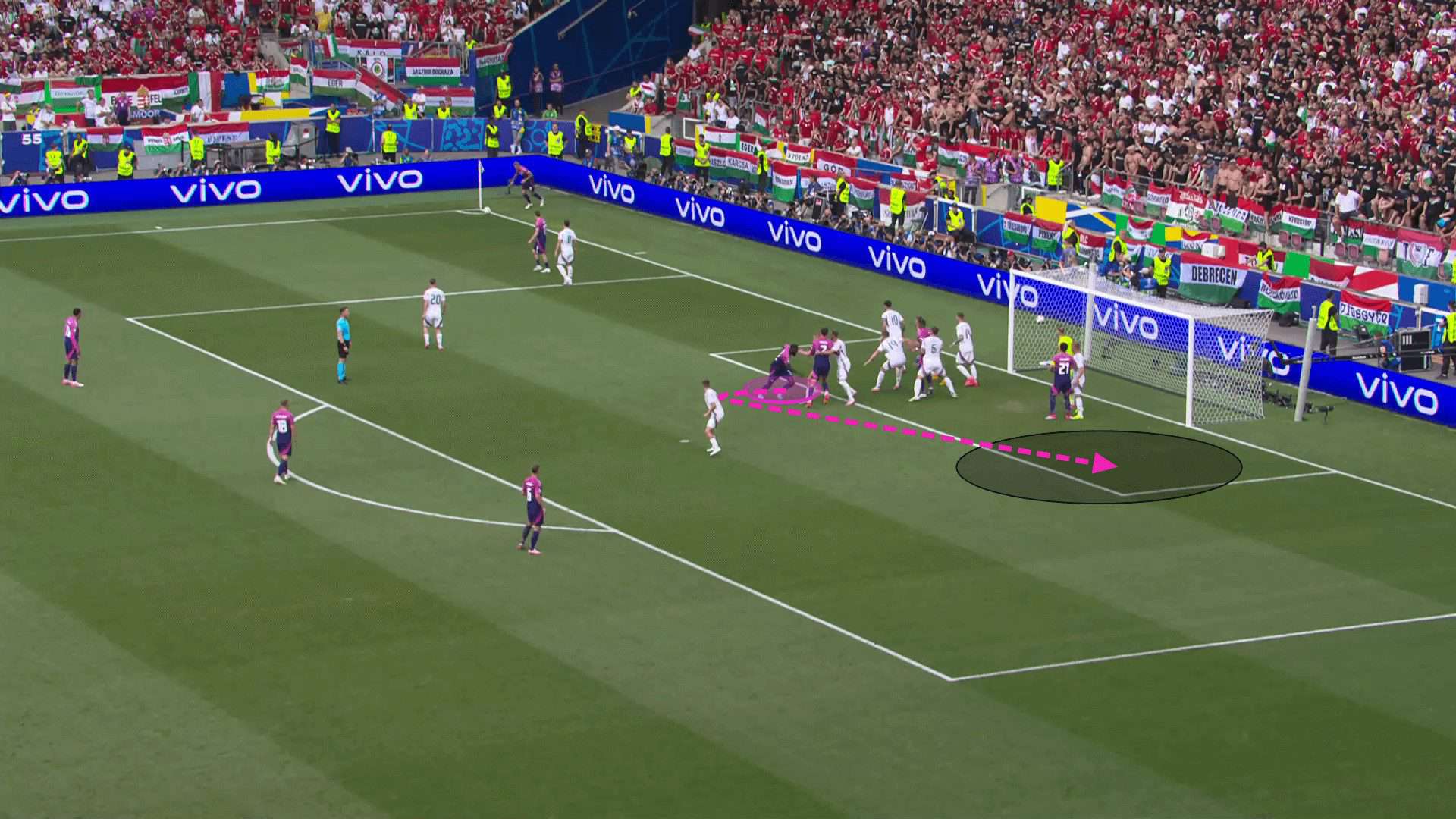
Group B
In group B, Italy have stood out as the most interesting side from a set play perspective, with a last-minute equaliser confirming their spot in the knockout phase of the competition. Italy’s strengths lie in their ability to adapt their routines to exploit the gaps in the opposition’s defensive systems.
In the fixture against Spain, we can see the zonal defensive unit is quite deep when defending against inswinging deliveries. In order to exploit the space highlighted in the example below, Italy’s attacking unit starts nearer the back half of the six-yard box, where they can make runs into the space from behind the defender’s shoulders, where the blindside positioning gives each player making that move the crucial separation needed to arrive in space unopposed to ensure making the first contact.
At the same time, we can see the runs being made towards the back post from the second attacking unit, which starts near the penalty spot.
One slight issue Italy have faced during this routine is the cross being delivered too close to the nearest zonal defender, giving Spain a chance to clear the danger. With Spain being so deep inside their six-yard box, Italy should be targeting the edge of the six-yard box, from where it is still possible to redirect the ball toward goal while keeping the distance between the zonal defenders. The angle of arrival in the target area makes it harder for attackers to execute their flick-on to a high standard, but with the players in the secondary unit attacking the back post, there is cover for flick-ons which are moving past the goal.
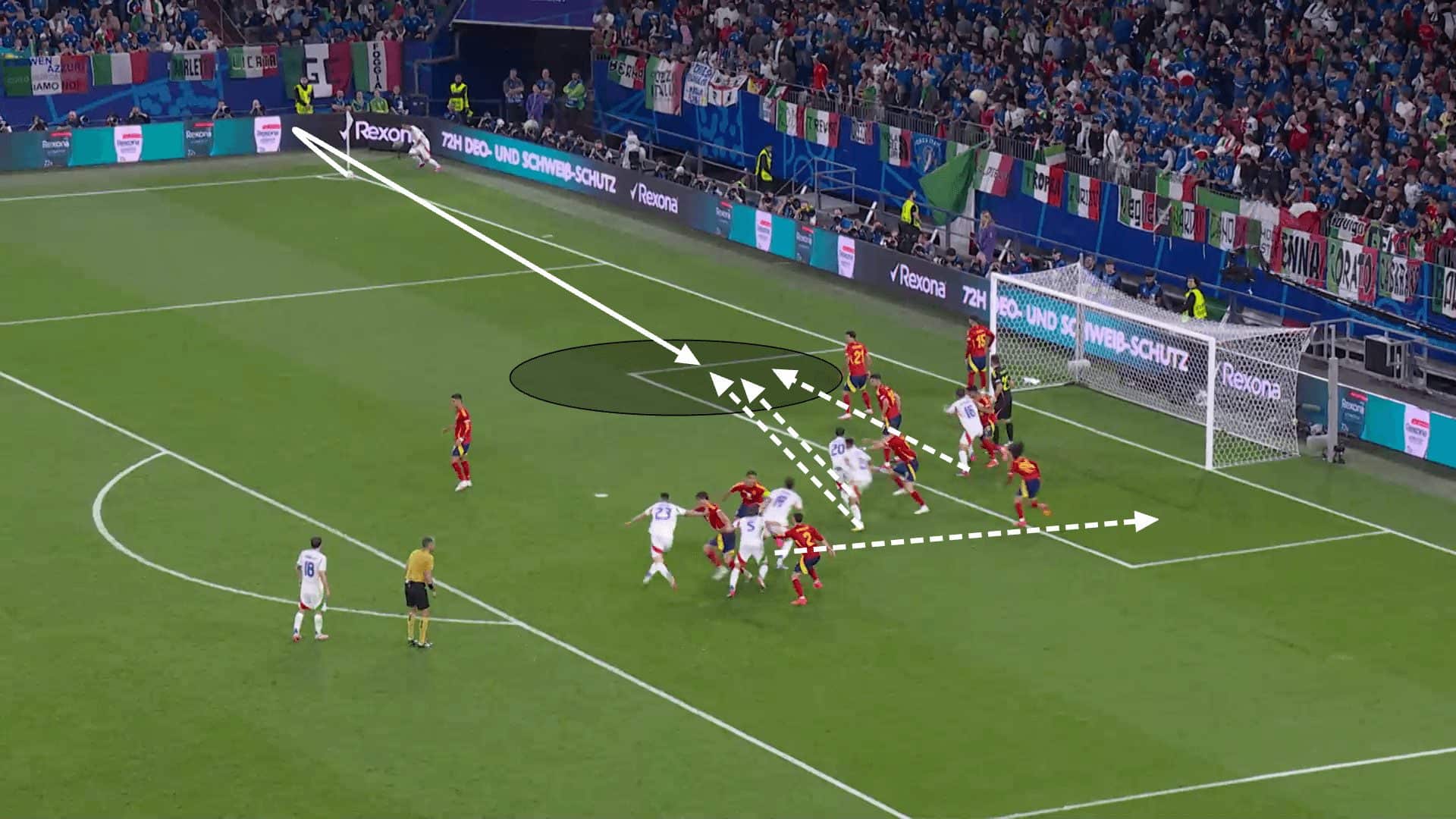
In the games against Albania and Croatia, Italy attempted to disrupt defensive systems through short corners, which stretched opponents apart and made it easier for attackers to lose their markers. A strong example below shows how the short corner allows Italy to change the delivery angle, making it easier to access the back side of the six-yard box. As the delivery is made, we can see a screen on the last zonal defender, which allows Bastoni to attack the back post cross unopposed. His marker is caught ball-watching, which lets Bastoni slip away to get a clear path to attack the ball.
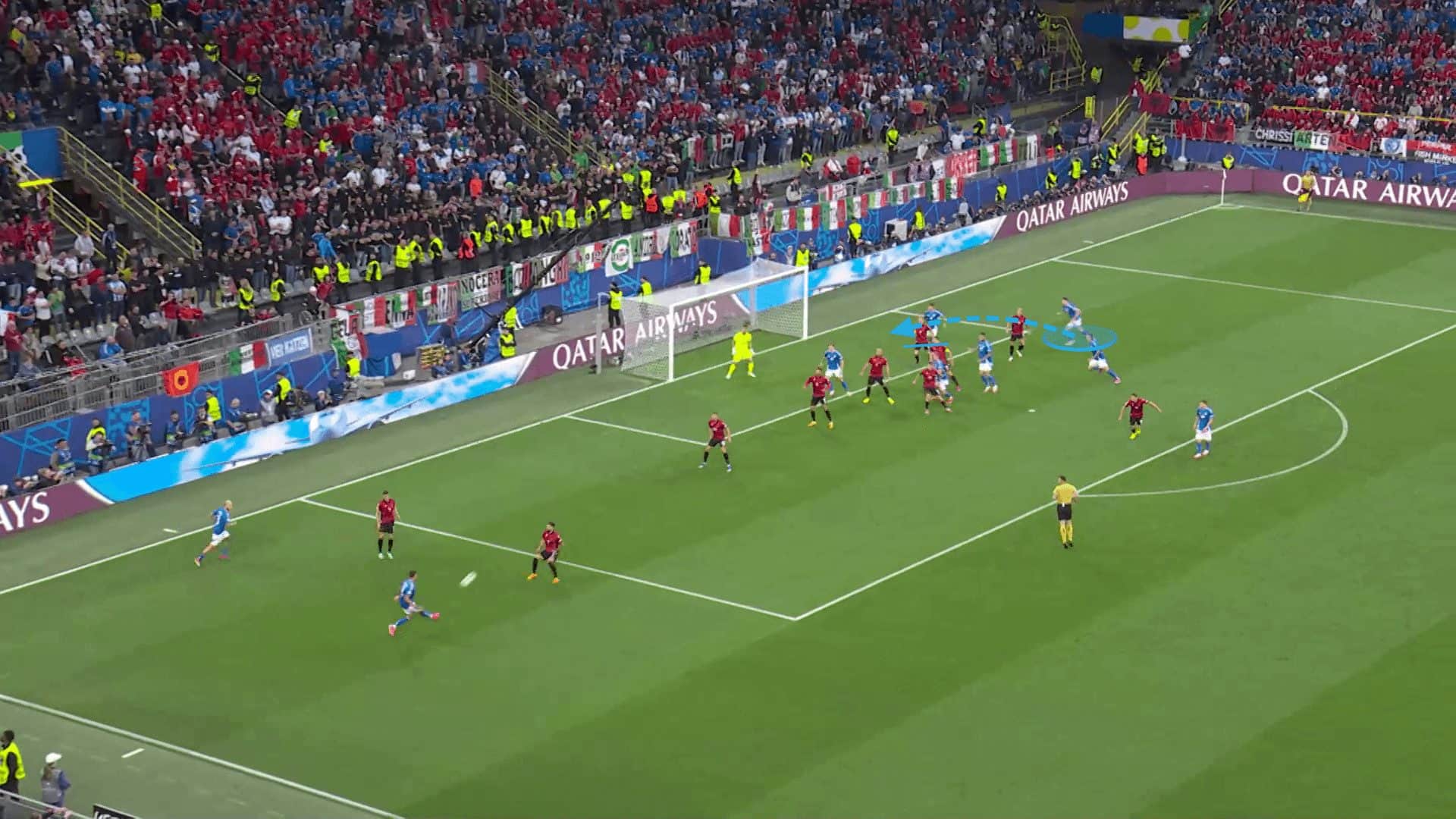
Group C
In group C, both Denmark and Slovenia have shown set-piece creativity in different ways. Denmark, who finished above Slovenia only because of a lesser yellow card count, have been threatening from attacking corner kicks.
This routine below is similar to Man City‘s goal scored in a game against Liverpool earlier in the season. An outswinging delivery encourages both the goalkeeper and zonal defenders to step away from the goal, with the cross expected to land outside of the six-yard box. However, through excellent technique in applying topspin rather than curling the ball, the delivery from Christian Eriksen is able to remain close to the byline and arrive in the area highlighted below.
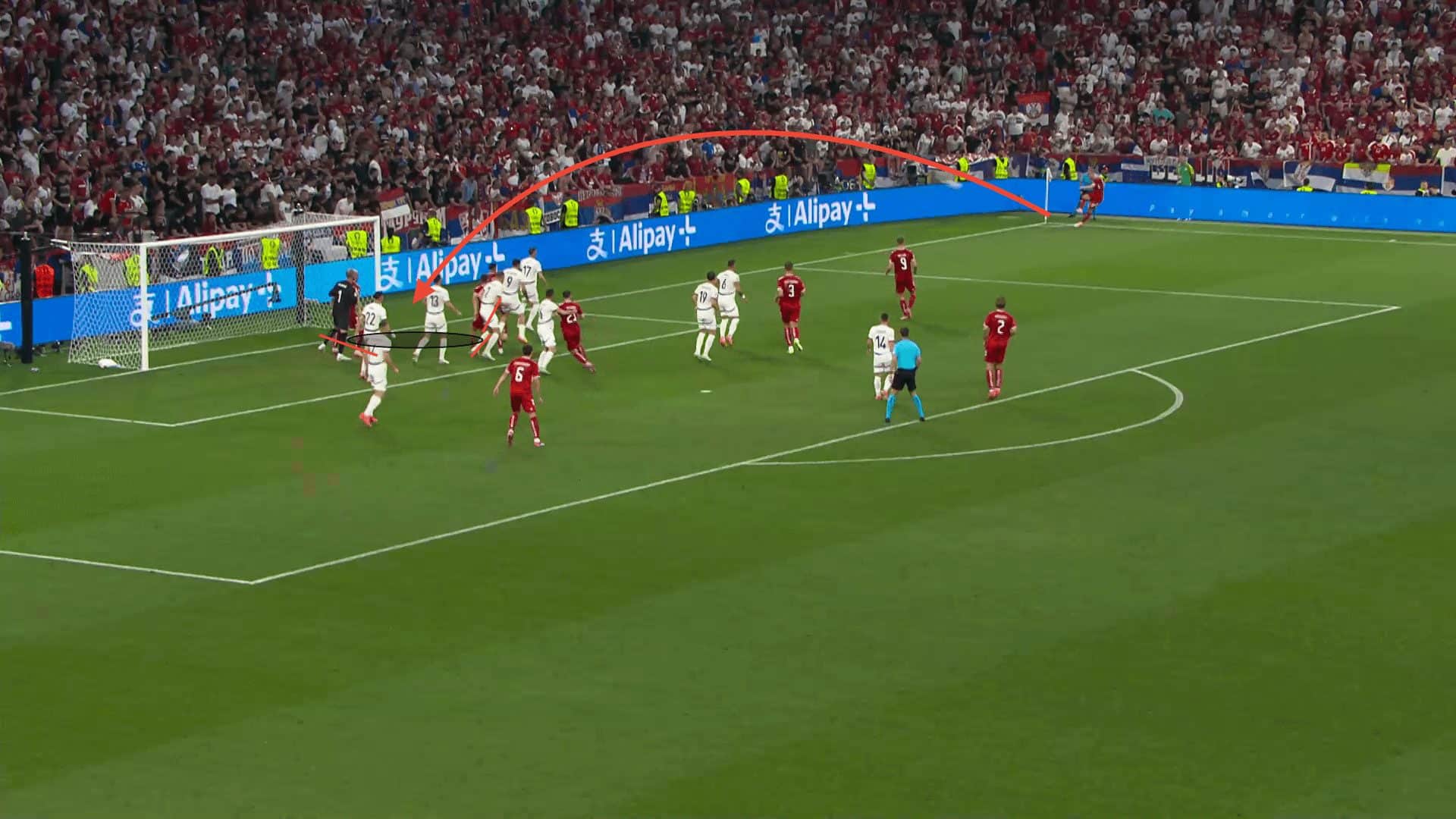
In this area highlighted, we can see two players setting screens on zonal defenders to prevent them from being able to clear the ball. Furthermore, a screen is placed on the goalkeeper to prevent him from claiming the cross and provide an open area for the ball to land in. The attacker can simultaneously immobilise the goalie and tap the ball into the goalkeeper by pinning the goalkeeper.
Unfortunately, in this particular example, the ball narrowly goes out of bounds, making this routine fail, but if it is attempted again, aiming the ball inches to the side can result in a goal for the Danes.
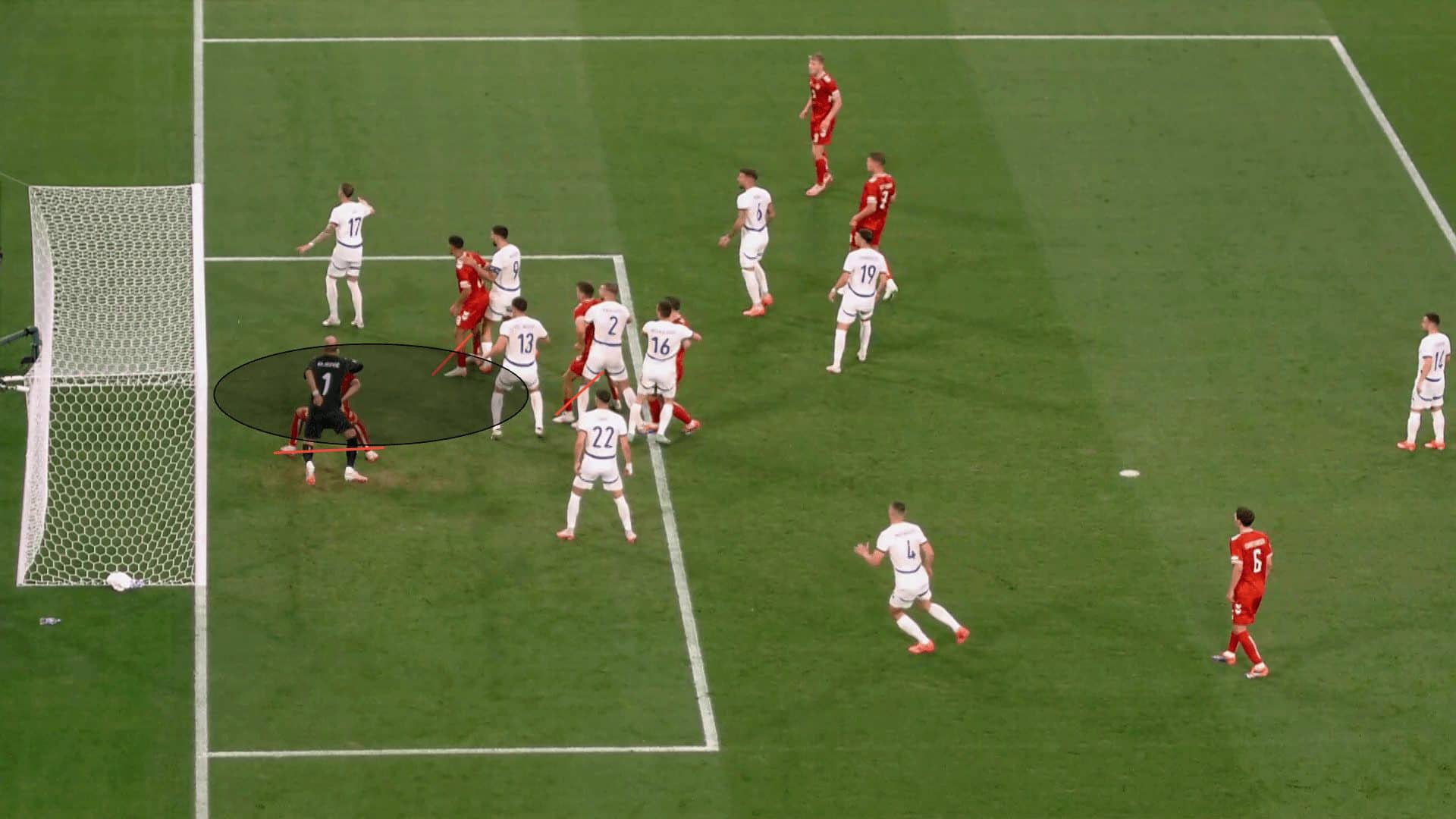
Another routine Denmark have used is the low cross to the space away from the defensive unit. This may have gone under the radar, as the referee blew the whistle before the corner was taken, meaning it won’t come up as a corner kick. However, Denmark have shown their hand and will likely be attempting this in future rounds. In the example below, we can see the two players nearest to the target area engage in physical duels with their markers and push them away from the target area. At the same time, there is also a screen set on the player marking the attacker, meaning the attacker can arrive in space unopposed.
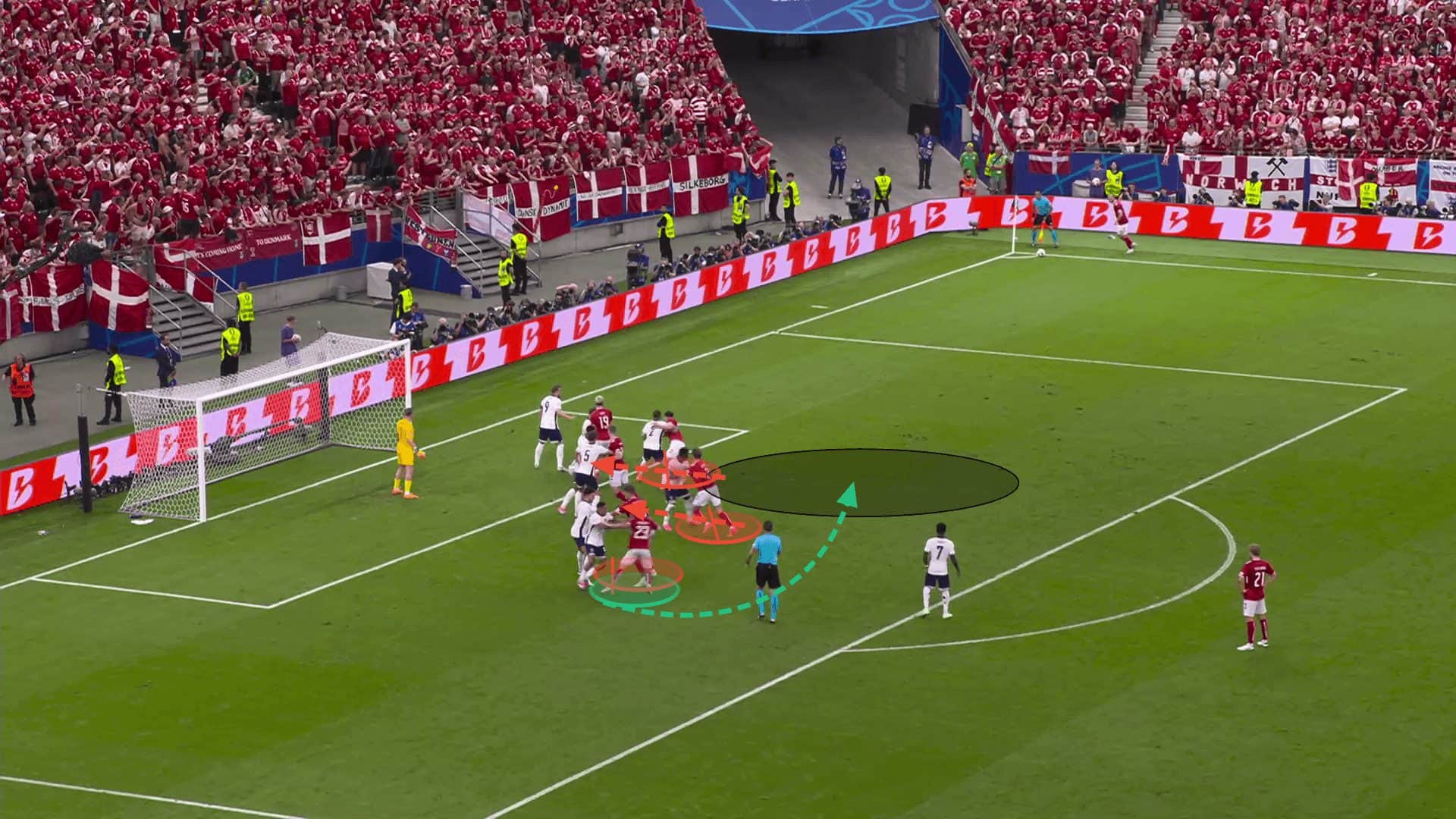
Slovenia has also stood out as a strong set-piece side, so we are focusing on their ideas from throw-ins. Returning the ball to the throw-taker is one common and effective method of retaining possession from throw-ins.

While the player marking the attacker moves to press the throw-in taker, who receives the ball back, the attacker in open play uses a sidestep movement to receive the ball outside of the defender’s shadow press. This quick and efficient move allows Slovenia to find the player in open play in open space, turn, and attack the opposition’s goal.
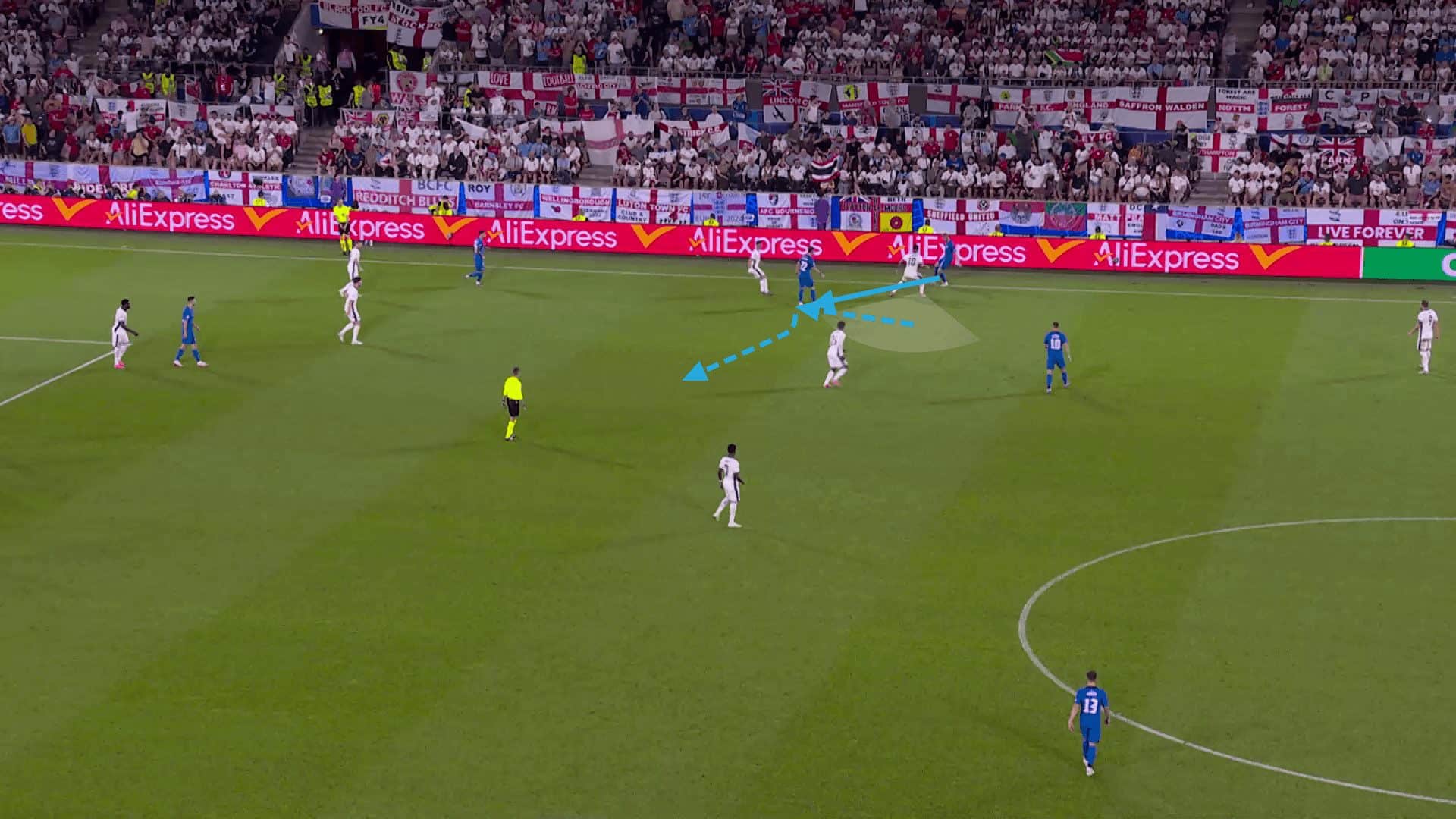
Erik Janža, Slovenia’s left back, is crucial to the throw-in creativity of the Slovenian side. His technique and range of throws is definitely in the highest tier among all throw-in takers, which allows him to execute long, flat and direct throws with ease. In the particular example below, we can see how Janža throws the ball into play, but with his technique, the ball arrives in the space quickly and flat on the floor, allowing the attacker to receive the ball and transition the ball with ease. As the ball travels into the middle of the pitch, it is easier to switch the ball to the opposite flank. The opposite-sided full-back is able to make his run from deep into the space on the far wing as he moves from behind his marker’s shoulder.

Janža’s excellent throw-in range also allows Slovenia to attack the six-yard box directly from throw-ins. We can see in the example below, the ball is thrown over the nearest zonal defenders, directly into the six-yard box, while the attacker on the far side arrives from the blind side to attempt to attack the ball.
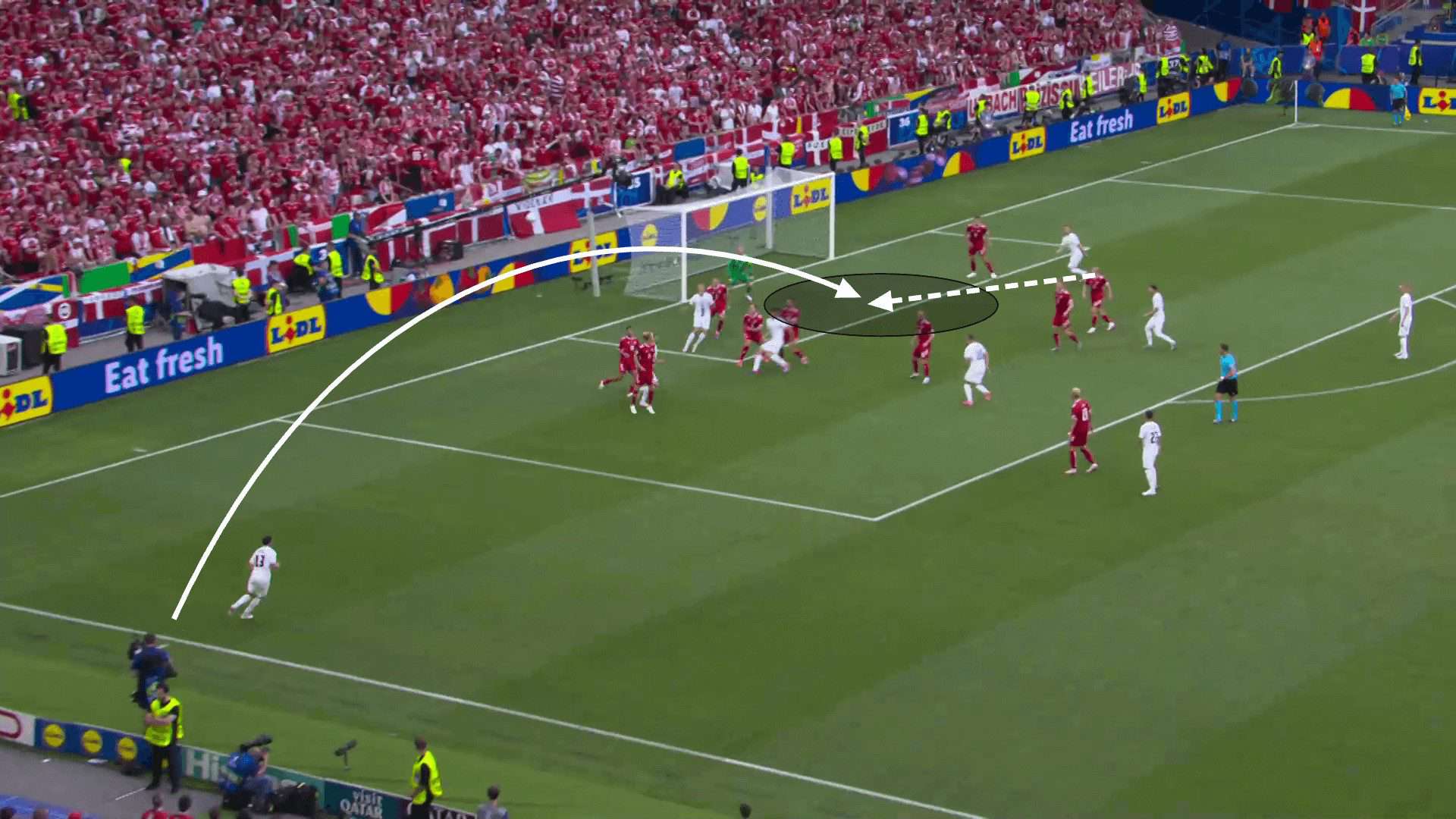
Group D
Although eliminated, Poland impressed during offensive corner kicks in group D. To stretch and widen gaps between defensive zonal structures, Poland used multiple runs targeted across both the front and back of different zonal defenders.
Zieliński is another quality set-piece taker who has been able to regularly whip deliveries into the six-yard box area in line with the front post. The runs are made at different areas on purpose, where Buksa attacks the gap between van Dijk and Dumfries. His run either has to be tracked by van Dijk, or he will be left unmarked and free to attack the ball like he was in that particular example. If van Dijk had attempted to attack the ball, Buksa would have been able to compete for the duel, attempting to ensure van Dijk missed the ball so that the second Polish attacker could attack the space behind the Liverpool captain to arrive in space. These runs are made from deep to gain the advantage against static zonal defenders in the aerial duel.
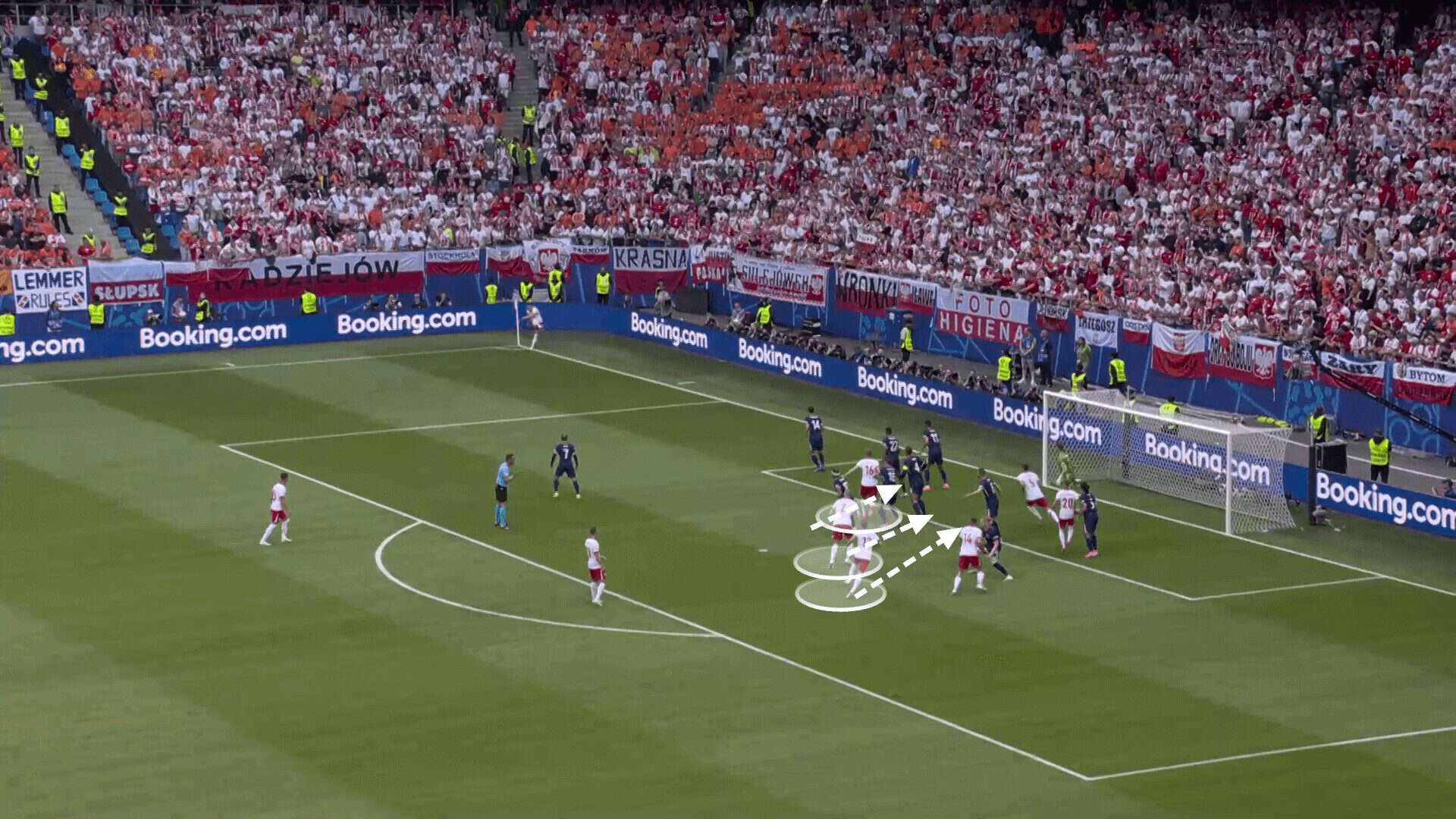
As the header is attempted, we can also see screens used to prevent opponents from being able to retreat and block shots or react to rebounds.
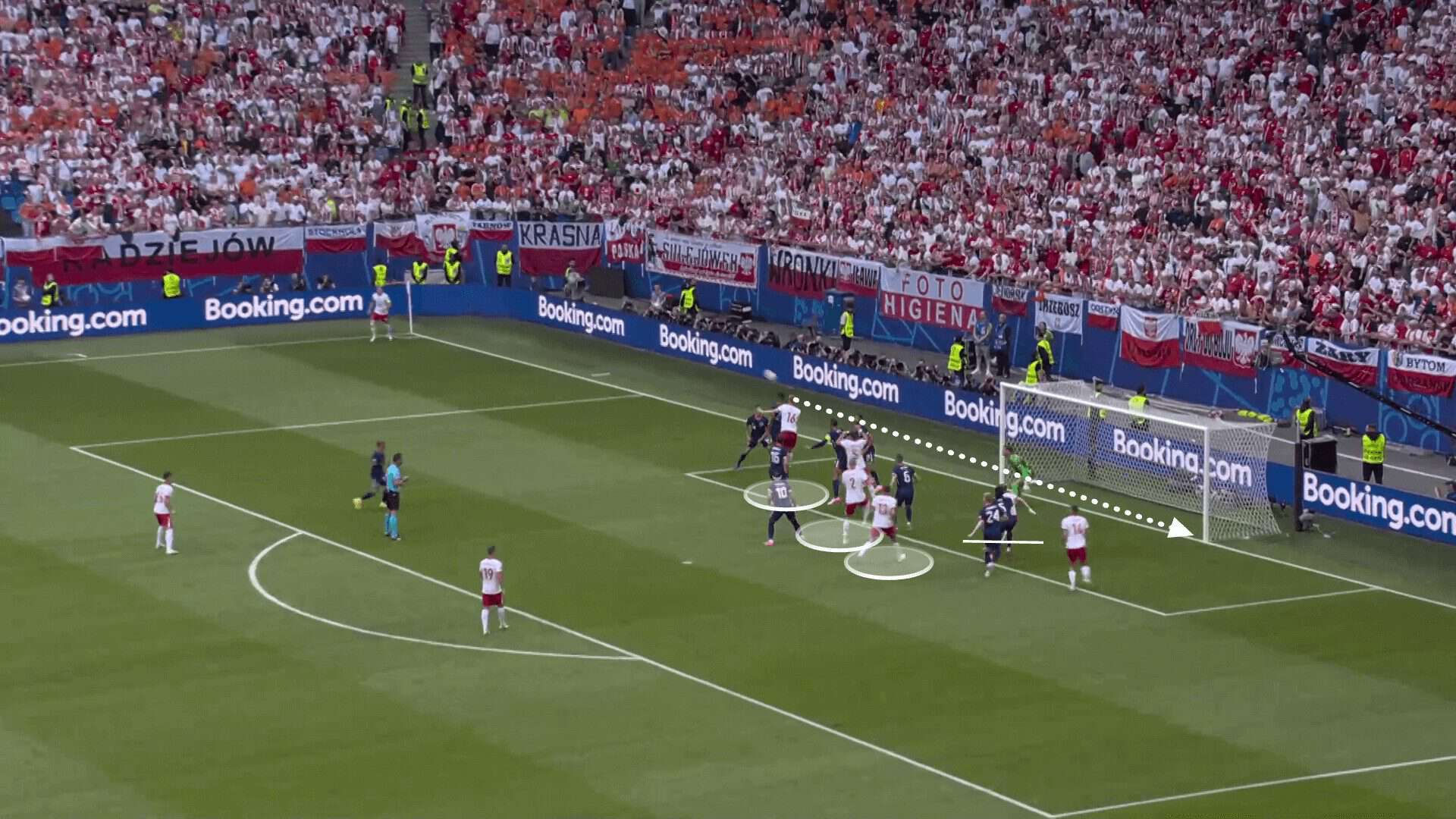
Group E
In group E, although eliminated as well, Ukraine have impressed due to Genoa’s Ruslan Malinovskyi’s incredible ball-striking technique. In recent seasons, Malinovskyi has stood out and inspired an article based on Marseille’s attacking set plays. At the Euros, he has only been limited to late substitution appearances; however, in the moments he did appear on the pitch, Ukraine’s set-piece threat multiplied tenfold. His dead ball delivery alone could warrant a start for his side to provide a constant set-piece threat.
We can see in the example below a run is made to the near side of the six-yard box, dragging away the near post marker. This gave Malinovskyi a narrow tunnel to the goal, which he attempted to exploit. His immense technique forces the goalkeeper to make a save on the goal line, and if coupled with any of the routines analysed earlier, would instantly increase the threat of their set plays. The screens on the goalkeeper like Denmark have attempted, combined with the Ukrainian’s precision, could lead to a direct goal in the future, although now it will only be seen for Genoa.
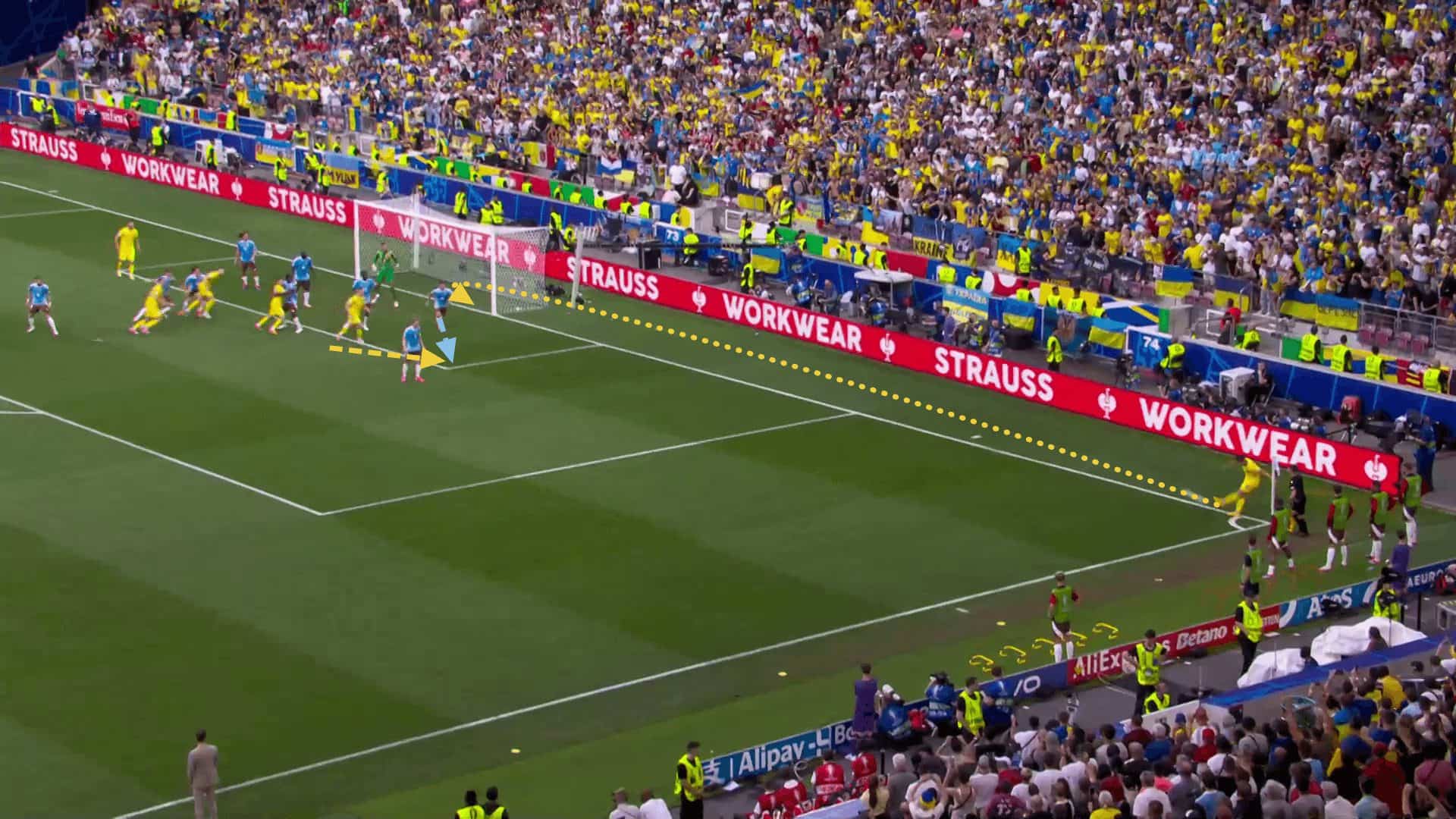
Summary
This tactical analysis delves into the concepts and advantages of the most innovative set-piece tactics employed in recent months in the Euros. The study reveals teams’ diverse strategies to secure competitive advantages, underscoring the significant potential for earning crucial points through set plays. Many of the teams in the competition have struggled to create a threat from set plays, signifying a clear gap many nations should be working on, but the teams highlighted above all have the extra potential and extra tools to win games in different ways.

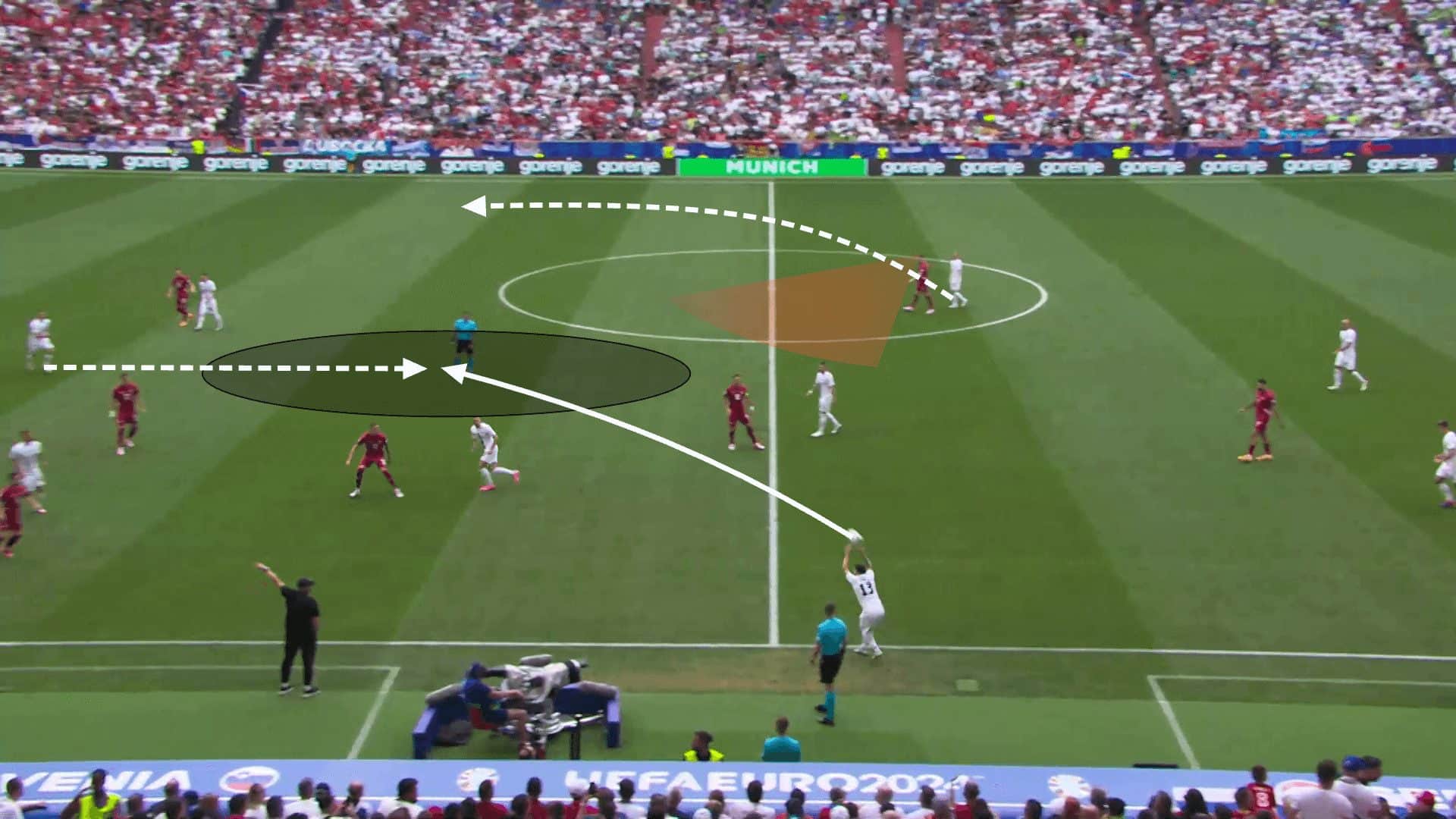




Comments